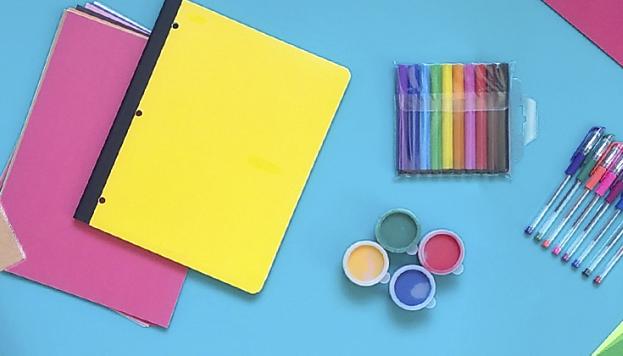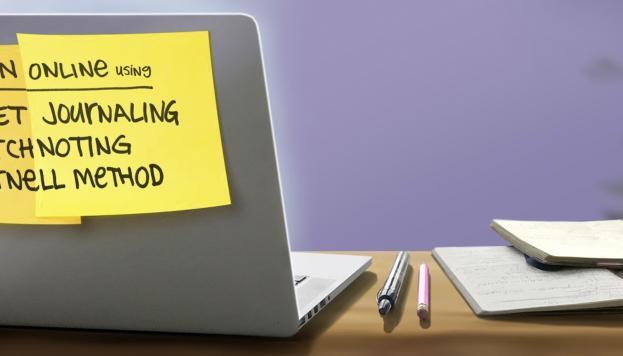
You’ve packed up your old bedroom, you’ve enrolled in your first semester of classes, you’ve studied the campus map. Now it’s time to take college prep to the next level. Digital tools have gotten you this far—maybe you’ve even had paperless classrooms. But that’s exactly why paper and paper-based packaging are your secret weapon to college life: They can help you study better, learn more quickly and have more fun at school, letting you go beyond the screen. Follow our A-to-Z college survival tips to learn how to get better grades, meet new people and live on the cheap.
- A is for All-Nighter. If you’re pulling an all-nighter, you’re gonna want the paper tools to do it right. Research shows that annotating text as you read roots the information in your memory. And who doesn’t love a flashcard? (Of course, pizza helps too.)
- B is for Boxes. You’re moving away from home for the first time, so get familiar with corrugated cardboard boxes. Gathering a variety of types, from shoeboxes to wardrobe boxes, will help you transport your belongings with as little fuss as possible. The best part is that they are easily recyclable: just empty, flatten and recycle!
- C is for Calendar. It’s easier to organize your life when you write it down. Keeping a paper calendar helps you prioritize studying, hanging out and, most importantly, sleeping.
- D is for Dorm Door. Meet new people by announcing yourself to your dorm-mates with a door decked out with paper cutouts and signs. Make it interactive by hanging a pad of paper with markers for them to leave messages.
- E is for Exam. Flashcard time! Use index cards to make a flash deck for yourself; they’re crucial for understanding the material. Once you’ve gotten the same card correct twice, take it out of the deck.
- F is for Furniture. Light, sturdy and inexpensive—what more do you want from your furniture? Whether you go DIY or buy it new, cardboard tables, sofas and chairs might surprise you with their design possibilities.
- G is for Games. Hosting game nights is an easy way to meet new people (and they’re compatible with school nights). Between board and card games, your night just got a lot more fun.
- H is for Highlighting. Interacting with reading material helps you retain information. Try this highlighting technique for memory retention and understanding the material: Read a chunk of text without highlighting, then go back and highlight just the key points.
- I is for Internships. The experience and connections you make at your college internships will help you launch your career—and build your résumé.
- J is for Job Boards. Need extra cash? The student center probably has a bulletin board with postings for odd jobs, many of which won’t be found online. Make visiting it a part of your morning route to beat the competition.
- K is for Knowing Your Assignment. Paper planners can keep you on track with what’s due when. (And it’s soooo satisfying to cross something off a list.) These customizable, printable planner pages will help you nail it.
- L is for Library. Studying at a library frees you from distractions. Once you’re ready to pack it in, take a whirl through the fiction stacks and find an unexpected leisure read.
- M is for Memorize. The memorization of information in your classes is vital for academic success. The physical feel of paper when studying and taking notes can actually help improve your memory, more than using a tablet or laptop.
- N is for Note Taking. Taking notes by hand helps you process information and ups your ability to recall key discussion points. Find out which note-taking method for understanding the material works best for you here.
- O is for Organized. A successful school year can't come without an organized schedule and to-do list. Using a planner and paper calendar can help you stay on top of your agenda - and they can be recycled too!
- P is for Pizza Box. Pizza is a staple for late nights after cramming for an exam or important presentation. Be sure to check your local recycling guidelines to see if you can recycle your pizza box when you are finished!
- Q is for Quiz. 81% of college students use paper to study for tests and quizzes. This is one place to follow the pack: Studying on paper helps you learn contextually, so your cramming is likelier to stick.
- R is for Ramen. Trust us: You will eat ramen. Lots of it. Luckily, Cup Noodles has updated their packaging to be papertarian friendly, meaning you can recycle it when you are finished. Cheap and sustainable!
- S is for Syllabus. It may be just a sheet of paper, but it outlines the next few months of your life in each of your classes. Keep them in a binder for easy reference.
- T is for Textbook. How can you be a student without textbooks? Reading off of paper can help your memory and pre-used, rental textbooks are often the cheapest way to get what you need!
- U is for University Bookstore. Obviously it’s the place for textbooks. But look beyond the obvious—college bookstores have reasonably priced supplies, clothes and snacks, and many offer study spaces and quick pickup for online orders.
- V is for Vision Board. Start your semester off right by manifesting success with a vision board. Use newspapers, magazines and printed photos, similar to collage journaling, to keep you inspired on your career path!
- W is for Washi Tape. Washi tape is a cute way to hang up items on your walls without damaging them, oh and it is also made of paper and recyclable!
- X is for “Xtra” Credit. OK, we got creative with the spelling here—and you should get creative when pitching extra credit projects to professors. Go the extra mile and create cardboard models to demonstrate principles and theories in science classes.
- Y is for Yellow Pencil. Whether it is for filling out a Scantron, sketching, or simply taking notes, the yellow pencil is a classic, tried-and-true writing utensil that will get you through your semester.
- Z is for ZZZ’s. If you have trouble falling asleep at night, grab a paperback. Reading a book before bed instead of noodling around on your phone preps you for a good night’s sleep—the light from electronic devices stimulates your brain and can keep you awake.



